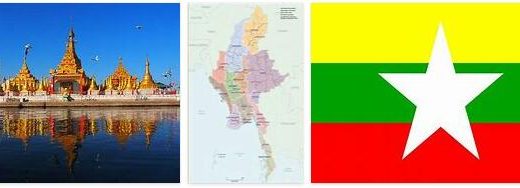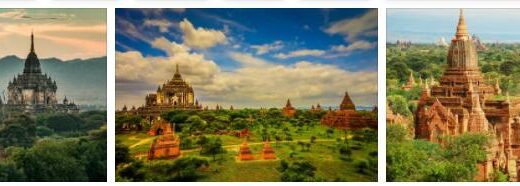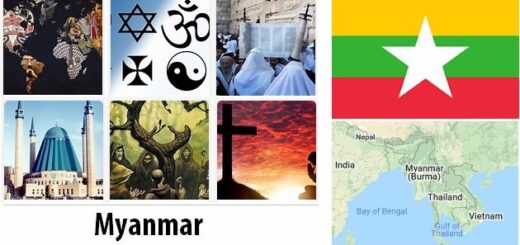Myanmar History Summary
A state in Southeast Asia, called Myanmar since 1989. The ancient history is little known and practically begins with the Indian penetration (3rd-6th century AD). A powerful Burmese empire was founded before the century. 11th and from 11th to 13th it reached its maximum splendor: the capital was Pagan, the “city of a thousand temples”, which Marco Polo visited in 1275 and described. Ten years later the Mongols destroyed the city and the empire. When the Genoese G. di Santo Stefano and G. Adorno (end of the 15th century) arrived in Myanmar, Pegu was still a small city, but in the following century it became the sumptuous capital of a new kingdom. The reunification of the country starting from the 17th century. was accompanied by the development of the northern capital, Ava, again replaced by Pegu in the second half of the century. 18 °. Possession of the British Empire of India as early as 1886, at the end of the Anglo-Burmese wars (1824-26, 1852 and 1886), it maintained administrative autonomy. The capital was established in Rangoon (od. Yangon). The separation from India (1937) made it an independent British colony. The changes were substantial: the monarchy was abolished; religion was sharply separated from politics; large tracts of land were used for rice cultivation (which made Myanmar one of the world’s largest exporters). Internal unrest was created, also due to a negative attitude towards the Buddhist religion, and movements for independence were born. During the Second World War the Japanese sought the support of the population and made the Myanmar nominally independent (1943), also creating a Burmese national army, but they actually replaced the British. The actual independence came only in 1948.
The Burmese Union. With the cessation of British colonial rule in January 1948, the territories of the Myanmar were constituted in a democratic state with a federal structure. The Burmese Union was actively involved in the system of international relations and from 1961 with U Thant it had the General Secretariat of the UN for a decade. In 1962, General Ne Win he took power in a coup d’état and together with the Revolutionary Council led the country for 26 years, giving life to the “Burmese road to socialism”. In 1974 a new Constitution decreed the birth of the Socialist Republic of Burma, with Rangoon as its capital; power was centralized in the hands of President Ne Win and the Burma socialist program party (BSPP), the only legal party. General Sein Win (1919-1993) was appointed prime minister. The government used the secret services (MIS) to crush all opposition; martial training and political indoctrination inflicted on all leading sectors of society and the economy were conducted in the name of the people and “socialist consciousness”. In 1977 a purge was carried out within the BSPP itself, to eliminate the left faction of the party. In the same year serious economic problems led to the removal of Sein Win and the appointment as prime minister of Colonel Maung Maung Kha (1920-1995), who remained in office until 1988. In 1981 the presidency of the Burmese Union passed to San Yu (1918-1996), while Ne Win maintained the political leadership of the BSPP. Popular discontent increased due to the disastrous economic situation and the failure to observe human rights, and in 1988 pro-democracy protests swept nationwide in a series of non-violent demonstrations, in the wake of dissent from the National League for Democracy (NLD), led by Aung San Suu Kyi. The government reaction resulted in many arrests and the killing of hundreds of civilians and students (March-June 1988). At the next BSPP congress (July 26) Ne Win announced the resignations of San Yu and four other prominent party members; Ne Win himself left there leadership of the BSPP to Sein Lwin (1923-2004), while General Saw Maung assumed power, who imposed martial law with a second coup and entrusted all authority to the State law and order restoration council (later renamed State peace and development council). In 1989 the country was renamed the Union of Myanmar; one party was formally abolished, but the 1990 elections, which saw the affirmation of the NLD, were canceled. The military junta continued to govern the country autocratically despite international pressure for a return to democracy. In 2007, the increase in the prices of primary goods caused new popular protests, which were also attended by Buddhist monks (Saffron Revolution). In 2008 a new Constitution, drawn up by the junta.



